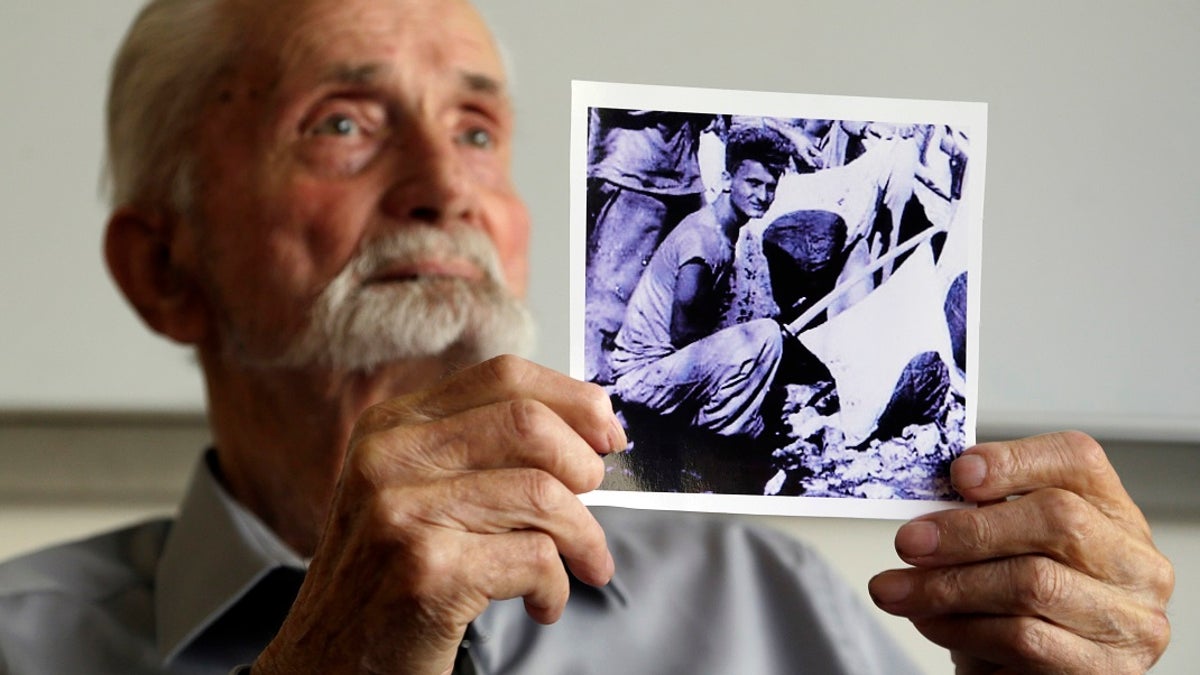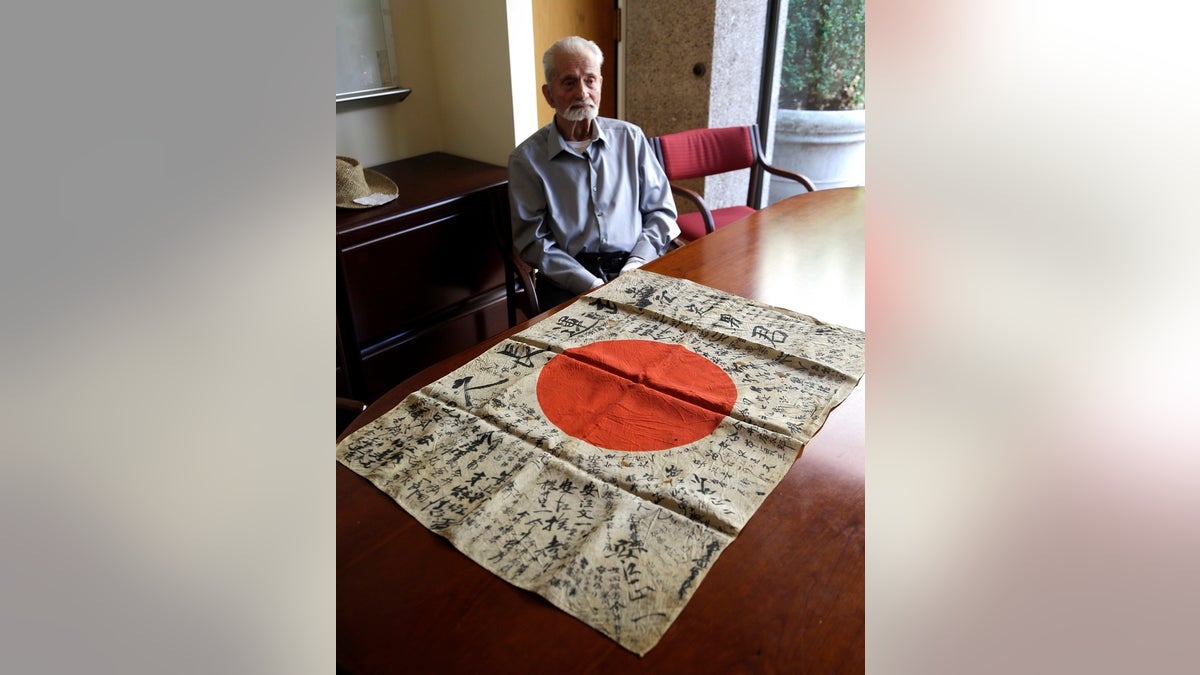
WWII veteran Marvin Strombo will return a flag from a dead Japanese soldier more than 70 years ago. (AP)
World War II veteran Marvin Strombo returned a Japanese flag to the family of the fallen soldier he recovered it from more than 70 years ago.
Strombo, 93, who was part of an elite U.S. Marines scout-sniper platoon, told The Associated Press how he came across the flag and why he needed to return it.

The flag contained names of the dead Japanese soldier's relatives and neighbors. (AP)
Strombo discovered the flag in 1944 during a battle in Saipan when he spotted a dead Japanese soldier lying on the ground. Strombo saw a white cloth poking out from the man’s pocket where he discovered the silk flag filled with elegant calligraphy. He took the flag home with him to Oregon.
BILL TO HELP CURB VETERANS’ SUICIDES MIGHT HAVE OPPOSITE EFFECT, CRITICS SAY
More than 70 years later, Strombo is returning the Japanese flag to his fallen enemy's family. He arrived Friday in Tokyo, the first stop in a 10,000-mile journey into the remote mountainside to bring the keepsake back to the man's home village — back to a brother and two sisters who could never say goodbye.
"I realized there were no bullets or shrapnel wounds, so I knew he was killed by the blast of a mortar," Strombo told The Associated Press.
“I think that soldier wanted me to find him for some reason.”

WWII veteran Marvin Strombo holds up a photo of himself taken during the battle on Saipan. (AP)
The flags were given to Japanese soldiers for good luck. Relatives, neighbors and friends signed their names on the flags.
Allied troops frequently took them from the bodies of their enemies as souvenirs. They have a deep significance because most Japanese families never learned how their loved ones died and never received remains.
‘NIGHT SHIFT’ TO AIR EPISODE CREATED AND ACTED BY VETS
Strombo kept the flag hung in a glass-fronted gun cabinet in his home for years. He wrote letters to learn more about the flag but eventually put it aside. He did not know Japanese and, in an era before the Internet, making any headway was difficult.

WWII veteran Marvin Strombo sits with the flag he will return to a fallen Japanese soldier's family. (AP)
Then, in 2012, the son of his former commanding officer contacted him about a book he was writing on the platoon.
Through him, Strombo reached out to the Obon Society, a nonprofit in Oregon that helps U.S. veterans and their descendants return Japanese flags to the families of fallen soldiers.
A week later, researchers discovered the flag belonged to Yasue Sadao by reading the script on the flag. They traced the corporal to a tea-growing village of about 2,400 people in the mountains roughly 200 miles west of Tokyo.
The calligraphy on the flag were the signatures of 180 friends and neighbors who saw Yasue off to war in Higashi Shirakawa, including 42 of his relatives. Seven of the original signatories are still alive, including Yasue’s 89-year-old brother and two sisters.
The Obon Society has returned about 125 flags and gets about five inquiries a day from aging soldiers who regret their actions and want to return the flags before they die. The group believes there are similar flags still hidden across the U.S. that could give answers to other families.
Strombo will be the first WWII veteran to return a flag in person to a Japanese family through the Obon Society.
Strombo can also help give the family some closure and show where Yasue died.
"I knew he was young because I could see his profile as I bent over him. He was laying on his back, kind of on his left side," Strombo said.
Only two other men in Strombo's platoon of 40 are still alive.
"It got so I kind of wanted to meet the family, you know," he said, his voice growing raspy. "I know it means so much to them."
The Associated Press contributed to this report.

